At gagadget.com, your trust is our priority. We follow strict quality standards in our research, tests, and analysis of video projectors, to give you the best experience. Learn more
Why a laser projector is the best home theater solution
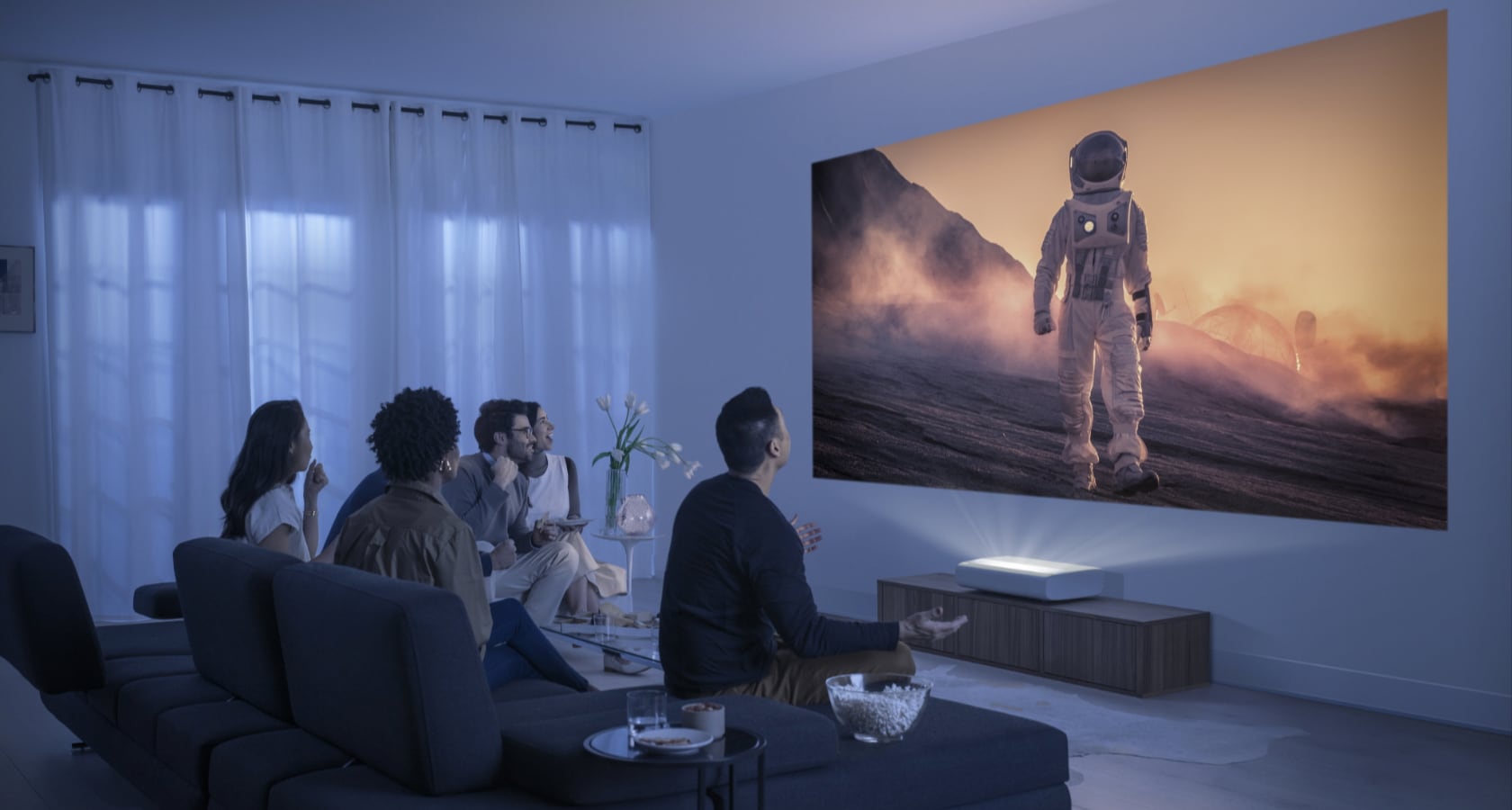
Home theaters emerged as a response to the desire to create at home the viewing of a movie in conditions close to the theater - with much greater technical capabilities, providing maximum immersion in what is happening on the screen. The editorial team of gg examines how modern technology has led to all the functions of a movie theater today united in one device.
Some history
Home theaters have gone through several conventional technological stages in their development from home cinema projectors to VCRs and DVD players (later - BluRay players). Over time, not only image sources have improved, but also the size of TV screens, as well as speaker systems.
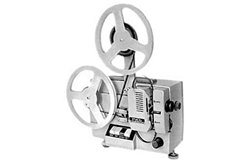 |
film projectors / film poor image quality, limited availability |
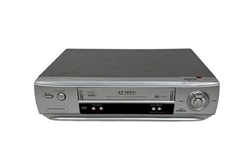 |
cassette recorders / magnetic tape analog image, stereo sound, mass distribution |
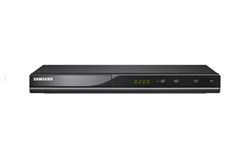 |
DVD players / optical disc digital image, FullHD resolution, 5-channel audio |
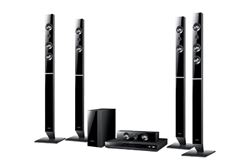 |
home theater systems / acoustics 5.1 surround sound - close to cinema |
The first home theaters used tape, just like the "big" cinemas. Because of this, the number of films was limited. You could watch what you filmed yourself with an amateur movie camera. But this required extra effort, for example, to process the tape. And you had to wait until dusk or artificially darken the room.
This magic of the cinema has remained to this day. Cinema projectors were replaced by the era of home video. First it was videotapes, then DVDs and BluRay discs. In parallel, the diagonals of televisions were growing. In addition, with the advent of LCD panels, they took up significantly less space. Acoustic systems were also improved, bringing home cinemas closer to the "real" cinema experience.
Projector Home Cinema Unlocks New Levels of Enjoyment
Watching a movie together with the whole family is a certain ritual that allows you to spend time together and share the impressions of the picture with family and friends.
In 2013, the first 85-inch TV model, Samsung S9, entered our market. It was so huge that it required a special bed to install. Since then, 8 years have passed and the further growth of TV diagonals seems to have stopped and reached its ceiling — you will not find TVs with a larger diagonal on sale. Physically, of course, you can create a diagonal of more than 85 inches, but the price of such a TV (and it is rather big with 85 inches) will be disproportionate. And here for everyone who wants to get the maximum available screen diagonal at home, there is only one way out - to buy a projector.
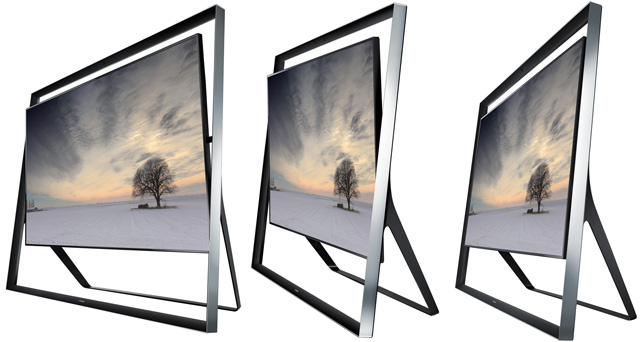
Samsung S9 UE85S9ATXUA
The first 85-inch Ultra HD 4K TV on the market (2013)
The only way to get an image larger than 85 inches for your home theater is a projector
4 Advantages of Modern Laser Projectors
| High brightness level Laser projectors have a brightness of over 2000 ANSI lumens, so you can use them even without artificial darkening of the room |
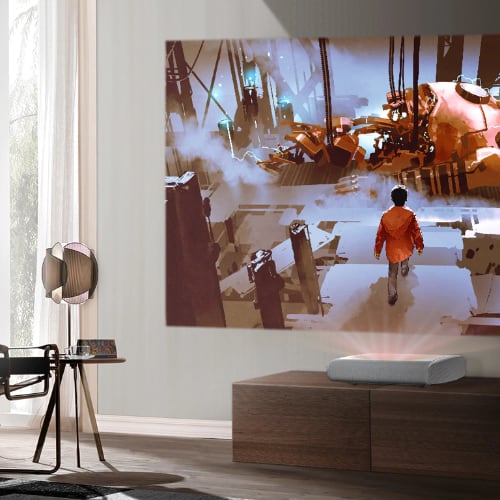 |
 |
Accurate color reproduction The triple RGB laser projector is capable of delivering BT.2020 progressive color space |
| Long service life Unlike traditional, lamp-based ones, laser projectors do not require regular lamp replacement, their brightness does not decrease over time, and they can work around the clock. The lifespan of the laser light sourse can reach 20,000 - 30,000 hours |
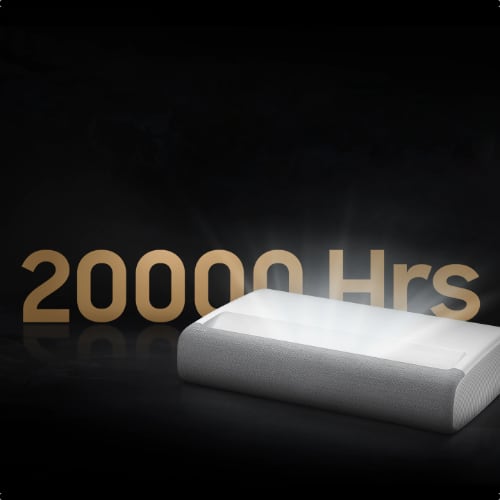 |
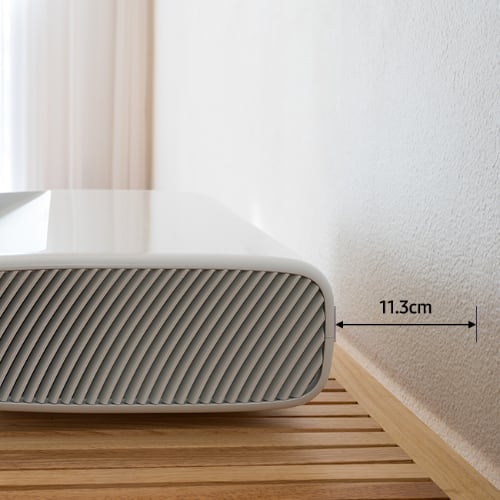 |
Easy to install Modern laser ultra-short throw projectors can be put directly in front of the screen, without complicated installation. And also, if necessary, it is easy to move for use in another room |
What to look for when choosing a home theater projector?
Modern projector features are not constant and change from year to year. Here's what you need to know first about the capabilities of advanced projectors in 2021.
Screen diagonal: the bigger is the better
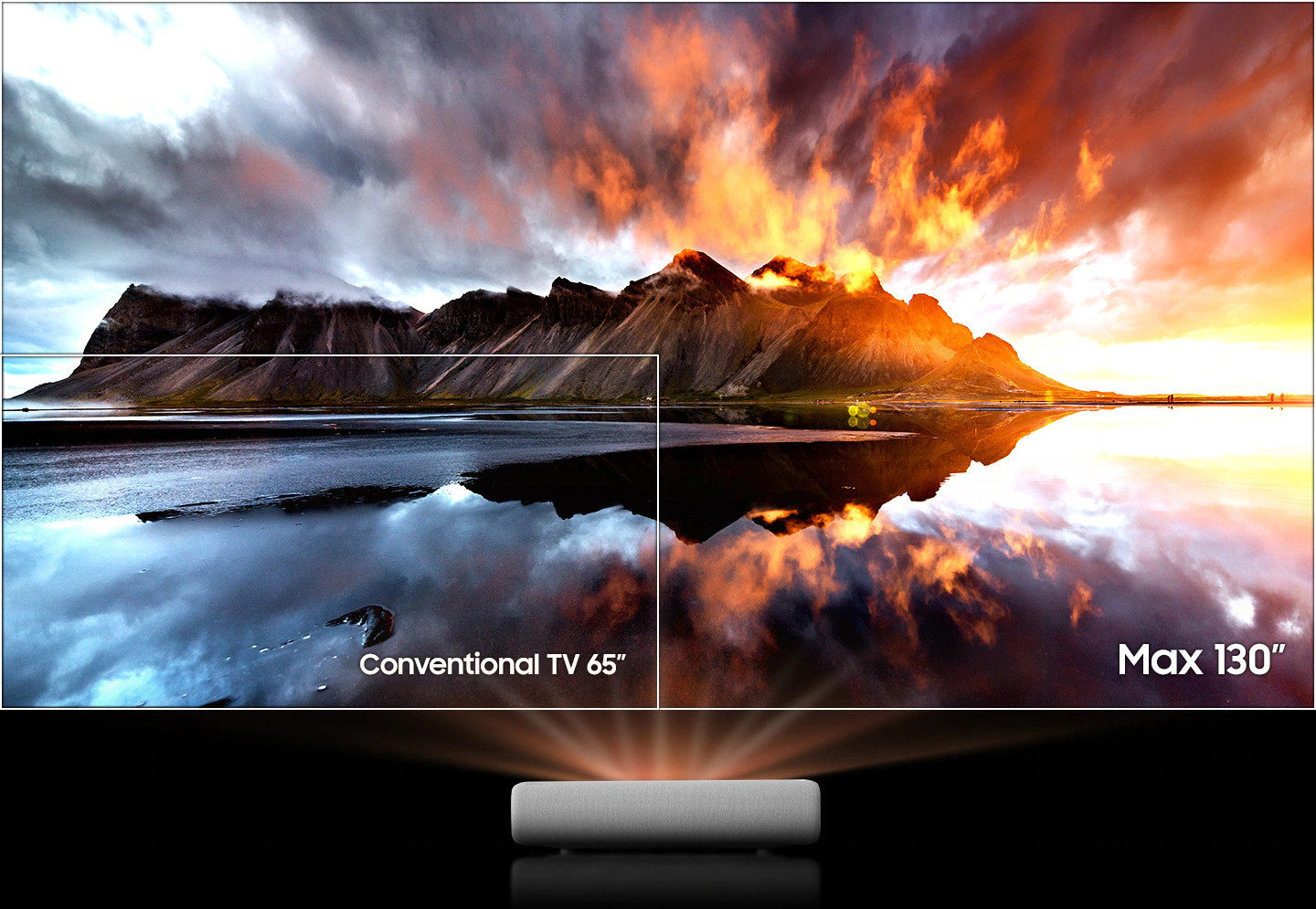
While today's TVs max diagonal is 85 inches, projectors can easily go over 100 inches. To estimate a projected image diagonal of 130 inches, imagine four 65-inch TVs next to each other.
Brightness: HDR support
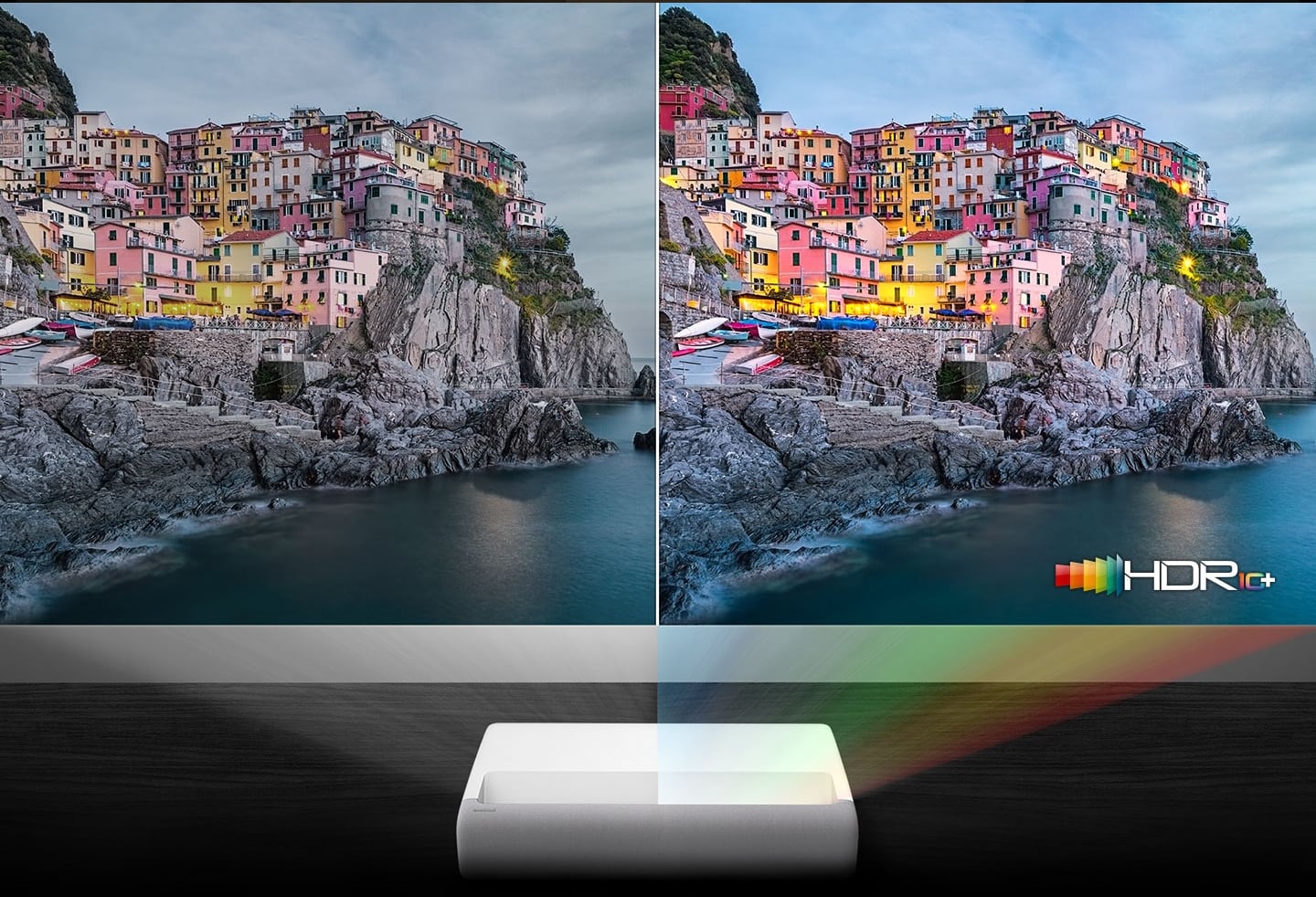
High dynamic range (HDR) has become the de facto standard in televisions. It provides a more color-rich image. And these technologies (including the latest version of the HDR10 + standard) are supported by modern laser projectors, And it makes sense to focus on them when buying such a projector.
Image Resolution: 4K (UltraHD) - Industry Standard
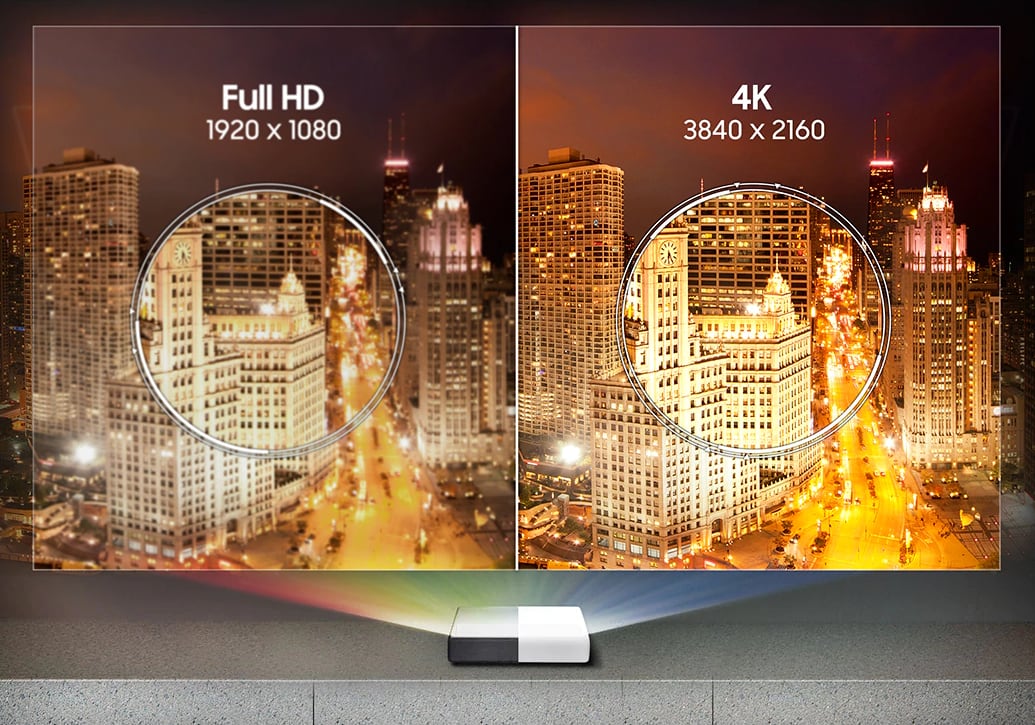
For a modern home theater, it makes no sense to buy a projector with a resolution below 4K (3840x2160). After all, all modern films, including video streaming services, are produced already in UltraHD resolution.
Sound: surround sound without additional acoustics
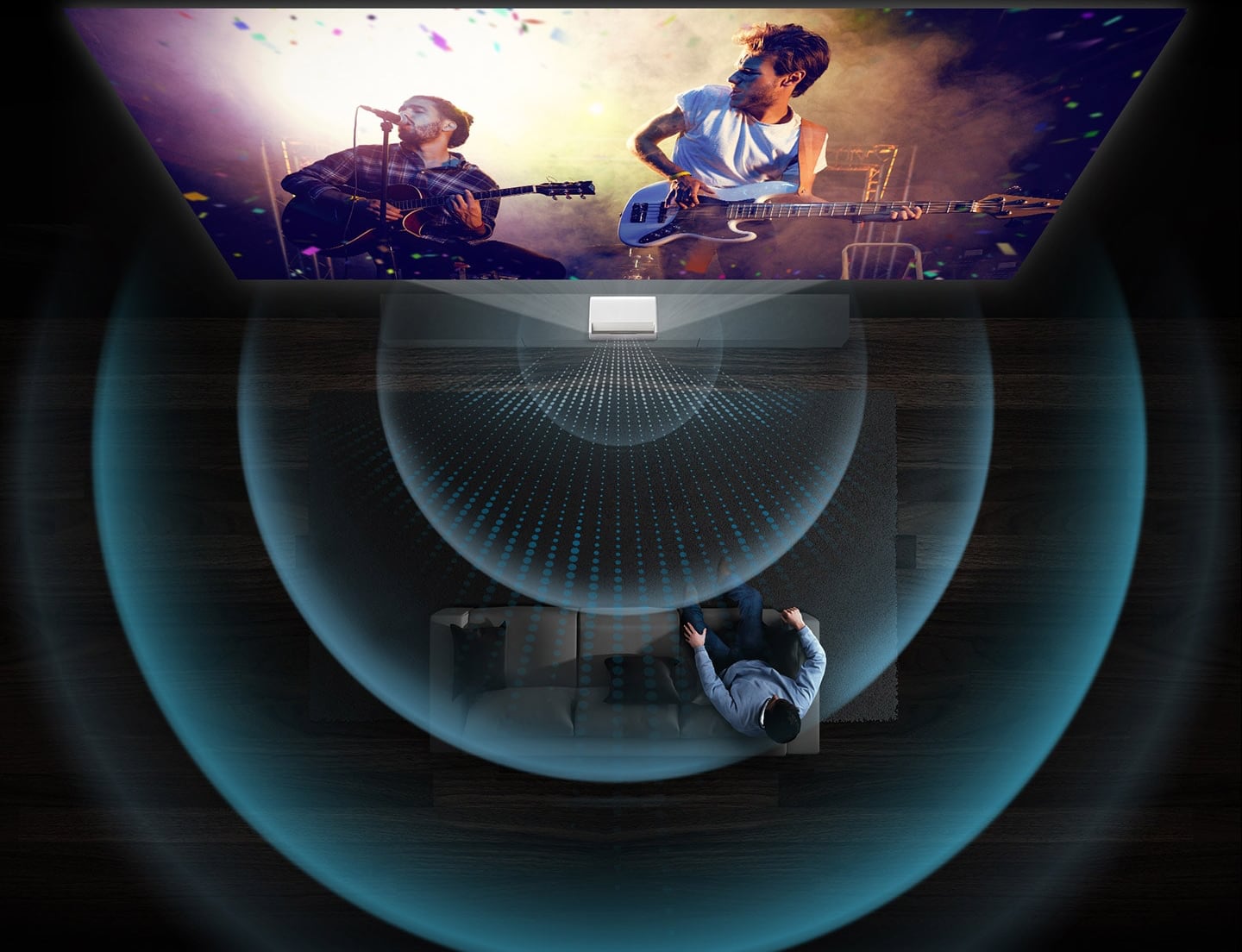
Of course, there is no limit to perfection when it comes to sound. But if you are not ready to set aside a separate room for a home theater and spend money on its acoustic preparation, which will cost more than the projector itself, then modern technologies will come to your aid. They will allow you to achieve surround sound using the acoustics built into the projector. Just inquire before purchasing if the projector supports multi-channel audio.
Design

Like a large screen TV, the projector will be constantly in the room and will be a part of the interior. It is important that it blends seamlessly into the design of the home theater part of the house. Fortunately, there are manufacturers who ensure that the best materials are used in the design of the projector - this applies to both the housing and the fabric upholstery of the speakers.
For those who want to know more
Despite the fact that the brightness of modern laser projectors allows you to run them without special screens, projecting the image on a white wall, it makes sense for such a serious purchase to additionally buy a separate screen. It can be fixed or motorized - it is important that it has an ALR (Ambient Light Rejection) canvas which prevents ambient light from other light sources in the room.
3 reasons to buy a laser home theater projector
- Huge screen diagonal - not available for TVs
The projector allows you to get a picture for the entire wall, which is much larger than any TV on the market. At the same time, the price of a projector will, almost always, be significantly lower than 85-inch TV models and the same set of technologies. - Picture quality
With 2000 ANSI lumens brightness and more, the projector can be used without darkening the room as a TV replacement. At the same time, all the other advantages to which we are accustomed are preserved: 4K resolution and HDR support. - Favorable price
Еhe price of a modern laser projector will, almost always, be significantly lower than TVs with maximum available diagonal and the same set of technologies. This makes the purchase of a projector economically beneficial for a family budget.
